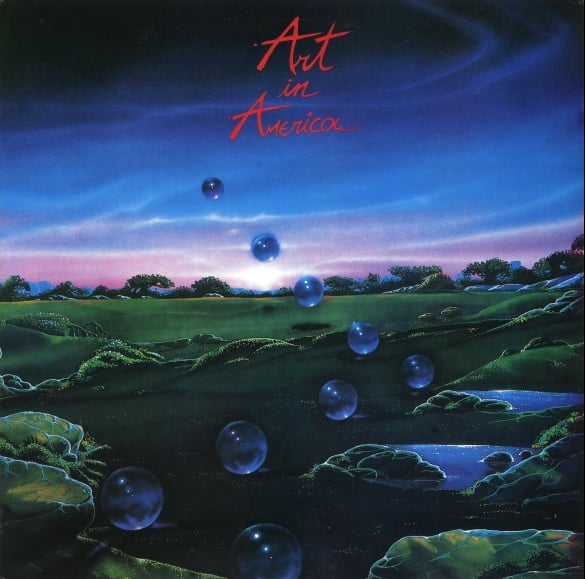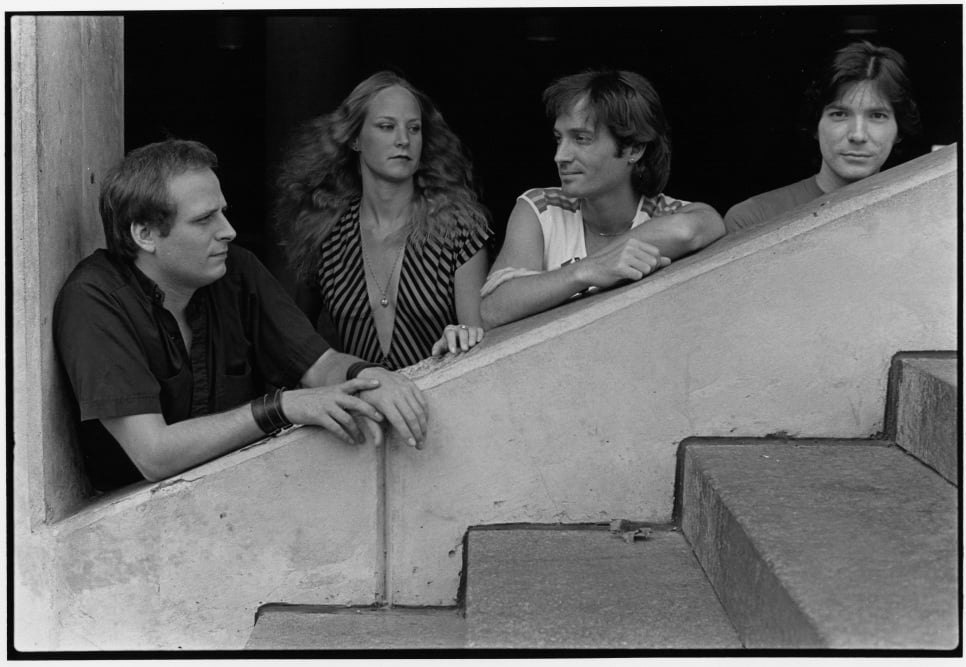Art World
What Major Art Magazine Has an ’80s Rock Band Named After It? Why, It’s Art in America!
The name was suggested by a friend of the band who had stacks of the magazine lying around.

The name was suggested by a friend of the band who had stacks of the magazine lying around.

Brian Boucher

You never know what you’re going to find when record shopping in Poughkeepsie, New York. Flipping through the vinyl at Darkside Records recently, I stumbled across a 1983 LP by Detroit band Art in America. Yes, the very same name as the century-old art magazine.
The band’s music engages in some of the aesthetic of contemporaneous prog rock bands like Yes, but focuses on radio-ready, three-minute pop tunes. The cover of the self-titled LP, released on CBS/Epic-Pavillion Records, features a dreamy, lush green landscape superimposed with a number of floating blue orbs, with the band’s name inscribed in red in the sky. The image is the first record cover by the Greek-born, single-named artist Ioannis, who later designed covers for bands like Deep Purple, the Allman Brothers, and King Crimson.
Active in the Detroit music scene in the late 1970s and early ’80s, Art in America consisted of three siblings from Michigan—lead singer and guitarist Chris Ruetenik, drummer Dan Ruetenik, and harpist Shishonee Ruetenik—along with bassist Jim Kuha. To burnish their image, the Rueteniks eventually became the Flynns, a punchier stage name for the first American rock band to employ a concert-size Lyon & Healey pedal harp.

Photo courtesy of Art in America.
But how did an art magazine come to be the namesake of a Detroit rock band?
It all started with Warren Westfall, a “bohemian” friend who had stacks of the magazine lying around, says Chris Ruetenik. “What is Art in America?” Westfall asked in a conversation with the band, he recalls. “It is its popular culture. It’s the synthesis of all the cultures that have contributed to it. The band is a result of that synthesis. Thus you are… Art in America!”
Rick Smith, the band’s manager in the ’80s and now principal of Michigan’s Wild Justice Music, says he cleared the use of the name with the magazine’s then editor-in-chief, Elizabeth C. Baker. “Let’s rock and roll,” Smith says she told him. Baker, reached by phone, didn’t recall the conversation and pointed out that such requests would normally go through the publishers. Neither Whitney Communications Corporation, which owned the magazine at the time, or Sony, which now owns Columbia, responded to emails.
“It’s news to me,” Baker said in a phone conversation. “I’m very glad to know about it. I was fascinated to see a harp in a rock band, and it’s a charmingly inventive video.”

Photo courtesy of Art in America.
The magazine’s name inspired the album’s title track as well as its rousing chorus: “Art in America / it’s different in my eyes / so welcome to new times / I know that you’re tired.” After a harp introduction, the video, which aired on MTV, shows the band performing the tune while floating in space; images of band members climbing stairs and opening doors symbolize the revelation of a new aesthetic.
“I was a bit full of myself in those days,” says Ruetenik. “It’s kind of embarrassing to look back on that. We were going to save everyone from music they were tired of and give people something new and incredible.” The band did have some success, getting a fair amount of radio play and opening for some of the major acts of the day, like Bill Bruford, Adam and the Ants, and King Crimson, but never hit it big. The band members dispersed, found jobs, and got on with their lives.
But the story doesn’t end there. Ruetenik got a call at his cubicle at work several years ago from English recording engineer David Hentschel, who has worked with artists from George Harrison to Queen. When Hentschel asked if they were still active, Ruetenik didn’t hesitate: “I lied through my teeth,” he told Michigan Radio in a 2013 interview. The band, which hadn’t played together in years, recorded several new songs under Hentschel’s tutelage. They had a real Rip Van Winkle experience, having gone silent in the classic radio age and revived in the era of streaming services.
“We’re promoting ourselves and getting new fans,” Ruetenik told Michigan Radio. “That’s what’s changed for us. We’re at the helm.” But now, a few years later, Art in America still hasn’t found a publishing company to promote the new recording or fund more studio time. None of it seems to bother Ruetenik, though. “We are all in our mid-60s,” he said in an email. “We had our shot. The band is a very fine memory.”